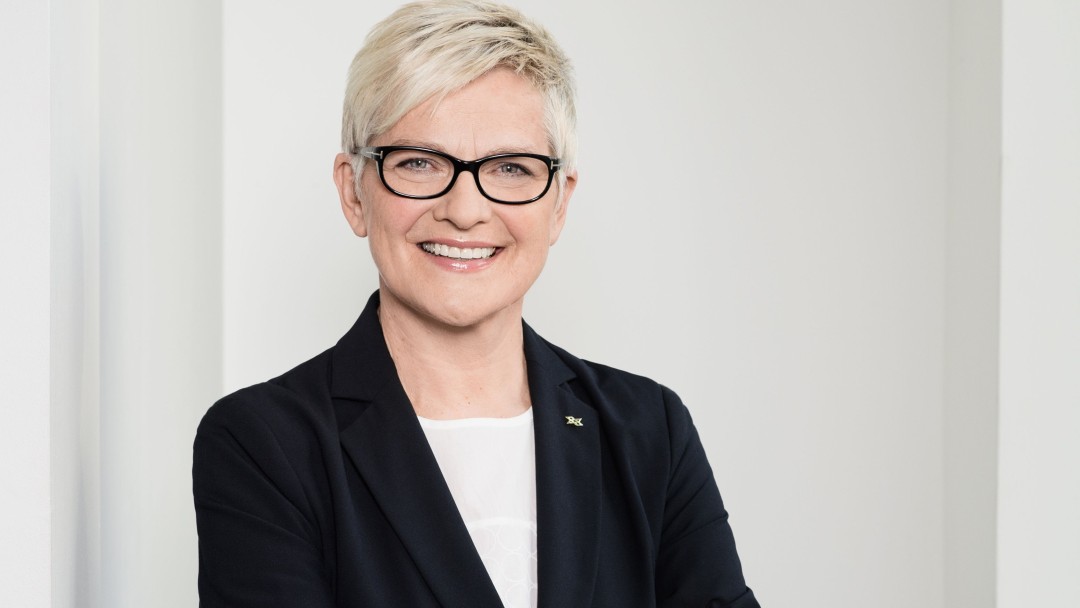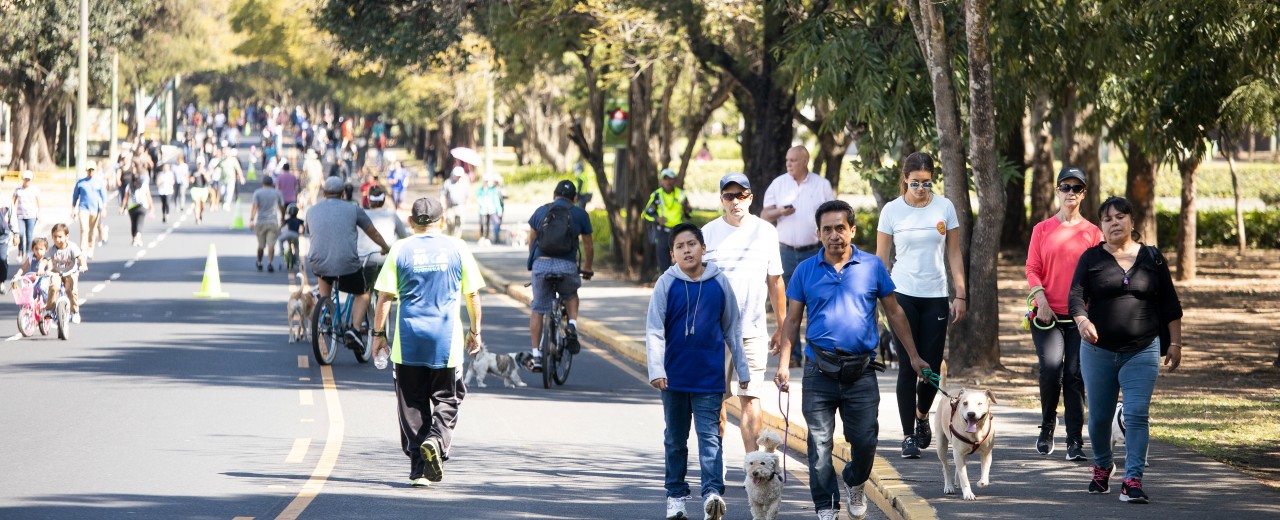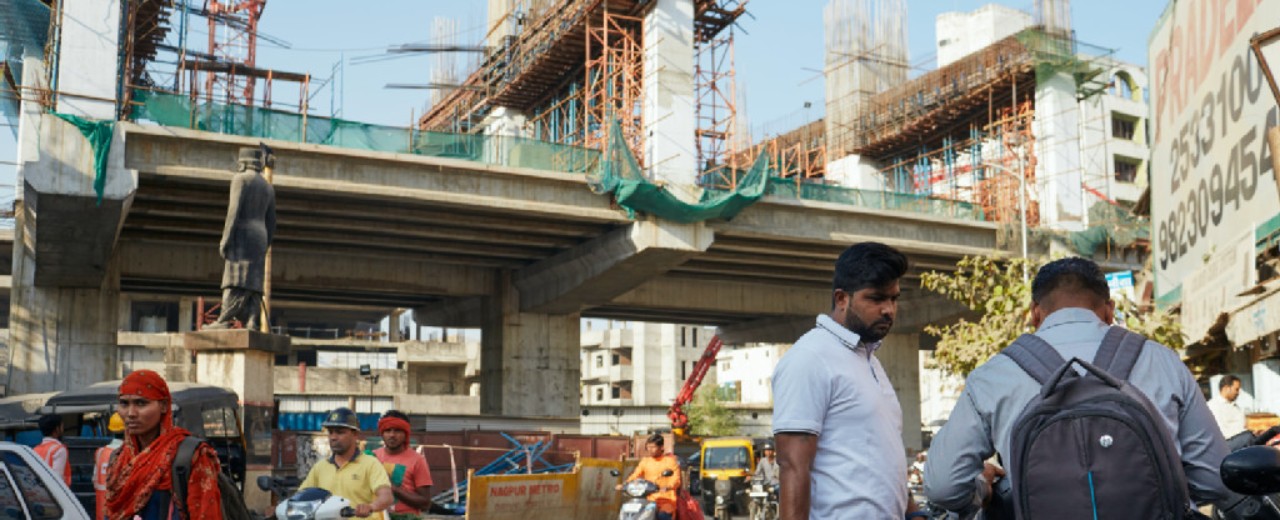Interview with Professor Barbara Lenz
“Improving car traffic management”
What do you personally associate with the term sustainable mobility?
To me, that primarily means public transport, walking and bicycles. The car is needed when there is a lack of viable alternatives. A bit of everything - that works especially well when the transport offer is coordinated with each other. Then transport is not only sustainable, but also guarantees a high degree of flexibility.
Is that also your vision for the future of urban transport?
We can already see today that especially in the cities, people use the existing possibilities to travel by public transport. The proportion in Germany is 10%; in the major modern cities, however, it reaches 25% and more. This should increase even further, as people can use public transport for long distances within the city, and to get into the city centre from the surrounding area. But it’s also well-suited for short journeys. Thus, it can meet a lot of mobility requirements, especially now that we are seeing fuel price peaks and energy conservation has become a more pressing issue than ever in light of the climate crisis. And public transport creates space that we urgently need in the urban centres. In my vision for the future, people will be able to move more freely around the cities again. They get back large parts of the public street space - as a space where they meet and stay, where children play, where there is room for encounters. At the moment, the use of public space in cities is largely dictated by motorised private transport.
How damaging is the pandemic for public transport? A lot of people are using their cars more often again because they’re scared of the virus...
In the corona era, people do seem to have felt clearly more comfortable and a bit safer in their own cars. But that might be a temporary phenomenon; it isn’t yet possible to assess the exact longer-term impacts on people’s behaviour in relation to mobility.
Is it really enough to just provide more public transport, or might we need to actively ban cars in cities?
Thus far, we have shied away from actively controlling and regulating motorised individual transport, making it more expensive and less attractive in order to send a clear signal: it’s better to use public transport in the city. Instruments for this would definitely already exist today: consistent parking space management, charges, more play streets, cycle routes and pedestrian zones, conversion of street space into public squares, green spaces, etc. And then it’s important to monitor compliance with the new regulations. The cities must set themselves clear, verifiable targets - this applies to Germany, but of course also to the whole world.

You haven’t yet said anything about the technology used in your vision. Some people have issues with electromobility for various reasons. What do you think?
That’s indeed a tricky topic. If we want to reduce greenhouse gases and air pollutants from road traffic as quickly as possible, we don’t currently have any options other than targeted reliance on electromobility. It’s the case with lots of public transport anyway, like trams and underground trains; they’re powered by electricity. More and more buses are becoming electric as well. But technology is developing. Hydrogen will certainly become a good option at some point, too. At the moment, however, we should assume that it will take another five to ten years for hydrogen-powered cars to reach the market.
Lots of people are predicting – or would like to see – the end of car use as we know it, and a switch to new forms of use, like car-sharing etc. What do you think about that?
I think that, unfortunately, we aren’t quite there yet when it comes to re-thinking the car. To date, ride-sharing options, in Germany at least, have been primarily used by younger men with above-average incomes. That is a specific customer base, but it hasn’t really reached the general public yet. We need to come up with more inventive ideas about how to make sharing attractive. At present, however, it even looks as if companies, which were considered to be important drivers of the development in car sharing, are withdrawing from the market.
The transport revolution is still something that people are thinking about a lot here, though. What is it like in other countries where the traffic chaos is sometimes far worse?
In lots of poorer countries, their first priority is to create more mobility options in the first place so people can safely get from A to B in their city, including over longer distances, and can increase their economic and social participation. First, they need to actually become mobile. That’s why “transport revolution” isn’t necessarily the right phrase in this context.
But that means “becoming mobile” without a car, right?
We need to create transport options that enable people to get around without being reliant on a car. Unfortunately, that often hasn’t been the case so far. That’s because, even if someone uses a bus or a tram for their commute back from work, for example, there often isn’t any sustainable public transport covering the final stretch to their home. So, people use a car if they can, sometimes from private commercial providers, purely because they lack alternatives.
Many countries have tuk tuks and motorbikes for that kind of thing...
Yes, and it seems to me that options like that are still not incorporated into the development of the public transport system and urban planning nearly enough. They offer a relatively environmentally friendly way to meet the bulk of mobility requirements. They often act as a connection between stops, or between the last bus or train station and a passenger’s home. They keep the system dynamic and open it up to a wider customer base.

People often say that developing countries can go straight to sustainable mobility without adopting motorised individual transport to the extent that we’re familiar with in industrialised countries. Do you think that’s a realistic prospect?
That would be ideal, but I’m sceptical for one simple reason: there’s no question that developing countries need more mobility. However, I think it’s unrealistic to think that cities in the southern hemisphere can just meet this demand with public transport. Urban planning is often not strong enough for that. In Africa, for example, cities usually have fairly uncontrolled expansion at their periphery. There might be roads, but people only think about buses and, in particular, trains and an underground, later on. In other words, being able to do without cars really takes good urban planning that incorporates consideration of sustainable transport. As long as the process is working the other way around, it makes “leap-frogging” difficult.
How does that relate to climate protection and the need to reduce CO2 emissions?
Not very well: in my view, this makes it all the more important to consider changing the technology in the transport that we do have and to look at electric tuk tuks and motorbikes, for example. For instance, in Beijing, mopeds with combustion engines are banned. It’s the same in Taipei. The switch is certainly due to particulate pollution, but electrification can then help reduce CO2 emissions as well.
If cities in developing countries are thinking about how they can get a handle on transport, what, in your opinion, should they do first?
I’d advise a huge expansion of public transport systems, and especially the use of Bus Rapid Transit or Light Rain Transit Systems, depending on local conditions. A particularly convenient solution that offers high capacities is the Metro. But unfortunately, it´s also a particularly expensive solution. That infrastructure, supplemented by environmentally-friendly and commercial two-wheelers, would be an enormous improvement on the transport chaos that we’re seeing in lots of cities at the moment.

How important is digitalisation in this context?
It can be really useful as a way to connect different types of transport and synchronise them with one another. Because there are lots of technologically savvy people in developing countries, I think digitalisation offers good opportunities to increase mobility while reducing environmental harm, for example, – using smart apps.
What do you see as the main barriers to more sustainable transport?
As well as deficiencies in urban planning, the main barrier is poverty – at a municipal level and among users themselves. There is a lack of financing.
What is the situation with energy, with fuel?
That’s a limiting factor as well because lots of people still lack access to energy. It is available, but usually in the form of liquid fuel because that’s easier to measure out and transport than working with electricity. Electrical solutions mean more effort and specific infrastructure.
But many developing countries have huge potential to use renewable energy sources to produce electricity. That’s why we frequently hear that Africa’s future is electric, including its transport.
That’s true, but it won’t happen right away. Execution will still take some time. Building infrastructure takes a long time. We’re seeing that even here in Germany, too, with the charging infrastructure for electric vehicles. And, once again, there’s a lack of financing, and it will take longer for private investors to recognise a business model here.
In order to expand sustainable transport systems, do we perhaps need even more government incentives and start-up funding from institutions like KfW?
Absolutely. By all means.
The interview was conducted by Friederike Bauer.
Share page
To share the content of this page with your network, click on one of the icons below.
Note on data protection: When you share content, your personal data is transferred to the selected network.
Data protection
Alternatively, you can also copy the short link: https://www.kfw-entwicklungsbank.de/s/enzBXz4s
Copy link Link copied